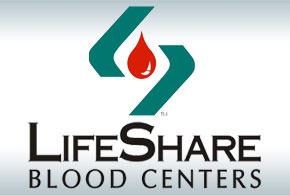Over the last decade, disaster recovery and business continuity have become essential considerations for organizations of all shapes and sizes. Yet, in the medical and health care arena—where lives increasingly depend on crucial data and uninterrupted IT—the ability to keep systems up and running 24/7/365 is critical.
“Resilience and data availability are at the center of our operations,” says Ric Jones, CIO of LifeShare Blood Centers in Shreveport, La. The organization operates seven blood banks and provides blood and blood products to approximately 120 hospitals across a swath of territory reaching from Beaumont, Texas, to Southern Arkansas.
LifeShare’s management realized that it needed to take a far more strategic approach to disaster recovery and business continuity. In many cases, an eight-to-10-hour lag occurred between when data was collected or generated and when it was backed up.
In the event of an outage—with all that data unavailable—the organization would not be able to operate. What’s more, annual tests took nearly three months to complete and frequently devolved into chaos.
“We recognized that it would be devastating if weather or other conditions caused the headquarters office to shut down,” Jones explains. In fact, the concept was not a theoretical one because several local blood centers had to temporarily shut their doors after Hurricane Katrina struck the Gulf Coast in 2005—even though they weren’t damaged or destroyed by the storm. That delayed the ability for patients to obtain transfusions.
“We couldn’t risk such a disruption in supplies,” he adds.
A Better IT and Data Availability Framework
LifeShare executives acknowledged that the organization had to take adopt a more sophisticated approach to data backup and availability. After surveying the marketplace and weighing various options—Jones relied heavily on research from Gartner—LifeShare turned to Sungard Availability Services to architect a better IT and data availability framework—and one that could handle the fluctuations in data volumes that occur during disasters.
The organization completed the transition to the new availability platform in 2012, and, according to Jones, it hasn’t looked back.
Since the deployment, LifeShare has dramatically reduced recovery time objectives (RTOs) and recovery point objectives (RPOs) for its 12 internal servers: Backups and recovery now take place in near real time. In addition, the organization has the ability to monitor performance and analyze results.
Another benefit is that LifeShare requires fewer IT staff members to handle backups. “We do not have to dedicate personnel resources to managing backups or a backup server,” Jones reports. “We are able to use staff for other important tasks that are associated with keeping blood supplies flowing to where they are needed.”
Along the way, the biggest challenge for LifeShare was managing an initial conflict between the organization’s IBM servers and a version of VMware that Sungard was using. However, Jones says that IBM provided additional servers as a temporary fix and later updated its facilities to run the newer version of VMware.
“Otherwise, it was an extremely smooth and easy transition,” Jones reports. He believes the LifeShare is now well-positioned for the future, adding: “We have taken a far more sophisticated approach to disaster recovery and business continuity.”









